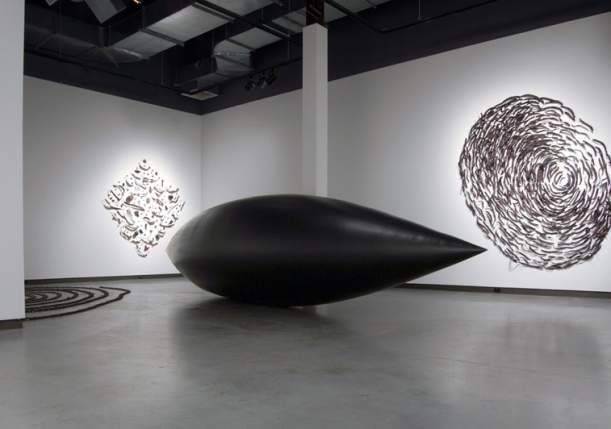The Brandywine Valley has long been a place that inspired generations of artists. From Howard Pyle to Andrew Wyeth and his son Jamie, a distinctive and distinctly recognizable body of work has emerged, one rooted in the visuals of this storied place.
But in mid-20th century Wilmington, a group gathered to explore a different vision. Their goal was to create a place for contemporary artists to work, exhibit, and learn from one another. And so in 1959, a small cadre of contemporary artists and art patrons founded The Delaware Contemporary. Originally called the Delaware Center for the Creative Arts (DCCA), it began life downtown in a dilapidated former sheet-metal fabricating factory on French Street. Over the years this peripatetic arts center moved several times, including a sojourn in the city’s vacant historic Water Department building. But at the turn of the 21st century, the vibrant noncollecting museum found its current – and permanent – home.
The Delaware Contemporary
- 200 S. Madison St.
Seeking to become part of Wilmington’s burgeoning revitalization efforts, in 2000 the organization purchased an abandoned factory – the Harlan and Hollingsworth railroad car assembly plant – on the city’s Riverfront. The 33,000-square-foot building located near I-95 positioned the museum as an anchor on the Riverfront. The building’s transformation was overseen by Delaware architects Moeckel Carbonell Associates, whose offices were nearby. “It was a green box of tin located in a bed of phragmites surrounded by beer cans and debris,” said architect Joe Carbonell. “Railroad tracks, the original welding shop, and a lot of derelict buildings were part of the landscape.”
But it’s a desolate site no longer. Now, the Delaware Contemporary’s expansive remodeled building – boasting almost eight times as much space as its original home – has transformed the neighborhood as well as the city’s art scene. With such a large and flexible space, the museum was able to exponentially expand its exhibitions and programs. Now, the building’s footprint embraces seven galleries, offices, classrooms, an auditorium, and a museum shop. And true to its founders’ aims, it’s also is home to 26 on-site studios that are always busy – and fully booked – with artists creating works in all media.
Now well into its sixth decade, the Delaware Contemporary has become one of the East Coast’s busiest and most innovative contemporary art spaces. It presents an average of 24 exhibitions annually that feature regionally, nationally, and internationally recognized artists. And for its extensive community and school programs, the institution partners with over 60 organizations.
The current exhibitions and upcoming 2023 offerings reflect the museum’s immense diversity and scope. And one of its bedrock programs continues to thrive – managing and maintaining the all-important artist’s studios, located in a self-contained wing that encompasses nearly one-third of the museum’s space. A wide range of artists continue to work there, and the museum hosts regular open houses where the public can visit the artists in their studios. This summer, a special exhibition will feature the museum’s 2023 Artists in Residence, showcasing their work.
The museum is also noted for its yearlong arts-related events. The latest will be held on June 11, when it will host the 4th annual West Street Art Festival. This celebratory day filled with indoor and outdoor art-based activities, performances, vendors, food trucks, and refreshments shines a light on local and emerging artists.
Located just minutes off I-95 on the Riverfront, The Delaware Contemporary offers free onsite parking, and it’s open Thursdays through Sundays 12 noon to 5pm. No matter when you visit, there is something that is bound to catch your eye – and light up your imagination – among their lively exhibitions and programs!



